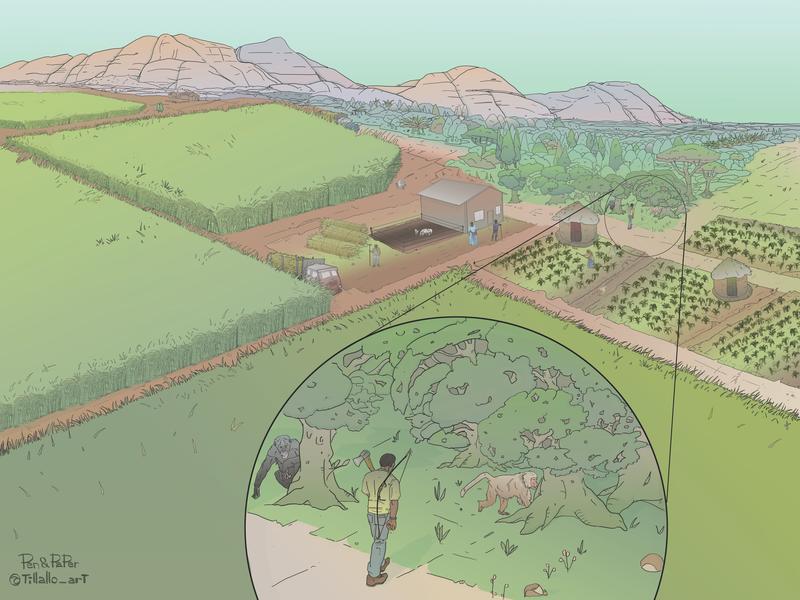We gain a variety of health and wellbeing benefits from interacting with nature – everything from physical benefits, like better cardiovascular health, to psychological benefits, like improvements to mood and lower fatigue. But nature also sustains the economic and material dimensions of people’s lives that support their mental health. These links are particularly important in the rural Global South, where millions rely on nature to meet their basic needs.
Researchers have published a new framework for conservationists and public health professionals to understand the connections between nature, its loss and conservation, and mental health. This framework captures the diverse direct and indirect relationships between mental health and nature, exploring the potential but as yet unknown mental health impacts of the global nature crises. Lead author Dr Thomas Pienkowski, who completed this work as part of his DPhil in Biology and is now at Imperial College London, said:
“We don’t know much about how the global nature crisis will affect mental health. Most research in this area has overlooked how nature supports the socioeconomic fabric of people’s lives that underpin their mental health.”
The framework explains how nature’s material contributions, like wild-harvested foods, products, and building materials, affect the ‘social determinants’ of mental health – and how losing these contributions, like the collapse of fisheries, can worsen stressors like poverty. The researchers also wanted to explore how conserving biodiversity might impact mental health by changing how nature’s benefits are distributed and accessed or creating direct effects through conservation projects.
The research has a particular focus on the Global South, where many people rely on natural resources to meet their basic needs. The team hope that the framework helps conservationists to consider the mental health implications of the different strategies that they take. Thomas added an example:
“Governments around the world have committed to expanding area-based conservation to 30% of the world’s surface by 2030, which will affect the lives of hundreds of millions of people. That expansion could take the form of relatively strict protected areas that exclude people. Our framework suggests that such an approach might undermine progress towards global mental health goals.
Alternatively, other approaches could support local communities and Indigenous groups in managing landscapes in ways that benefit nature while also supporting local livelihoods and cultures. These approaches may help support residents’ mental health by recognising their rights to natural resources, land, culture, and self-determined governance systems.”

The Budongo landscape in western Uganda is a mosaic of subsistence and contact farming, bordering the Budongo and Rwensama Forest Reserves, which are important sources of food and income for forest-dependent households.
Illustration by Pen & Paper Science
To read more about this research, published in One Earth, visit: https://www.cell.com/one-earth/fulltext/S2590-3322(24)00247-1